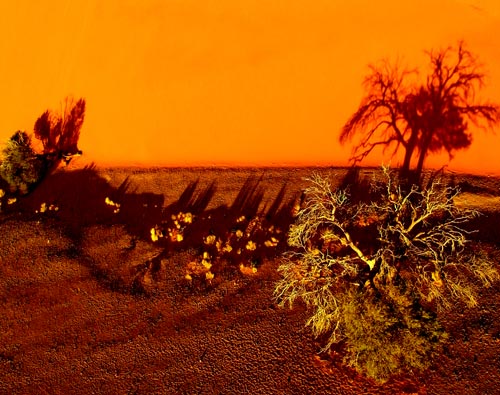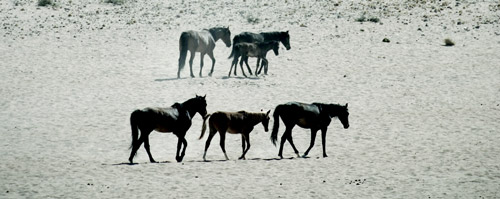
Some of these places, like Stonehenge are man-made. Others like our own Death Valley or Yosemite are works of nature. Two of my favorite such spots are low on most people’s radar, but they certainly fit the category. They are the so-called Skeleton Coast and the Namib Desert on the western edge of Namibia, near the southern part of Africa.
Our flight wasn’t exactly one of my favorites. To get to Namibia requires a certain amount of stamina. The concept of a direct flight from San Francisco to Windhoek, Namibia brings gales of laughter from most airlines. We eventually found the best, but believe me it wasn’t easy. We flew from San Francisco to London to Frankfurt and foolishly felt we had the stamina to go on. After a few hours of rest on the less-than-comfortable benches in the Frankfurt airport, we boarded a 747 headed for Windhoek. The flight added another eight hours to the twelve it took to get to Frankfurt – but hey, we were going to a new and exciting place.

The ride from the airport to our hotel almost made it worthwhile. It was October and the jacaranda trees were in full bloom. I wonder why these beautiful purple trees haven’t caught on more. They were spectacular.
Now just a quick history lesson. Way back in the seventeenth century the Germans moved into this area – probably to maintain some control of Africa as the British and other European countries were establishing footholds all over. During World War II the British in South Africa move in and kept the territory after the war. But the German influence remains – with German names and history spotted all over. A little side humor. There is a huge but totally useless steam engine located out in front of the no-longer-in-existence railroad station. It is named the “Martin Luther Engine.” The reason goes back to the days of the Reformation when Martin said
“I stand here firm, I can do nothing else.”
Soon after World War II the nation began to strive for independence and was granted that status in 1990.
The question remains – why would anyone want it? It is the second-least populated country in Africa and has an average per capita income of nearly $1.25 US per day. Still, it does all right with tourism and mining. But a couple of nicknames, such as “the land of contrasts” and “the land God made when she was mad” give you an idea of life in this part of the world. But let’s get on with this “contrast” thing.
Along the west coast, bordering the Atlantic Ocean sits a huge multi-kilometer long sand dune. For some reason, unexplained to me on my visit, it almost never rains here. Apparently it has something to do with the ocean tidal flow. These sand dunes range in color from red to yellow to black. We took a flight over them at dusk, and the contrasts were unbelievable. The dunes are several hundred meters high and march unchecked directly toward the Atlantic Ocean. I don’t know how fast they are moving, but they advance steadily, insistent on taking a bath.
Flying along the coast we could see why it is called the Skeleton Coast. The rotting hulls of several ships are visible. The sand has moved out to where these vessels were originally grounded, and one can’t help but wonder how they got so far inland to begin with.
Apparently the cross currents here are not only hazardous for ships but deposit skeletons of larger fish such as whales and sharks on these sandy beaches. Thus the name Skeleton Coast.

The next day we took a land safari out to the same area. Here we were exposed to unbelievable contrasts. With no rain the desert remains absolutely dry (How obvious can a statement be?) but being this close to the ocean fog rolls in off the water. So, surprisingly, a few things thrive on the moisture in the air. The most startling of these anomalies is the Welwitschia plant. (Don’t ask me to pronounce it.) Our guide claimed they are three to four thousand years old, and they sure look it. They resemble some succulents we had at one time that I forgot to water. My first observation was that they were about to die, but my guide insisted they have looked like this for several thousand years. I told him I’d come back in a few hundred years to check out their progress. He wasn’t amused.
There were other desert plants and creatures to behold too. We ran across, figuratively not literally, a sidewinder snake. They actually move sideways, leaving a strange pattern in the sand.
The visit despite the distance was a happy one. We were overcome with new and different sights which often come to mind as we spend our lives in the comforts of consistency. We need a break like this from the daily routine and grind which we face each morning. Somehow this everyday schedule seems easier when you have just returned from a grand adventure.
Harry Hubinger is a retired engineer who operated his own company for twenty years. He first began traveling outside the United States on business, but these visits escalated upon his retirement. He has now traveled to 115 countries and continues to add several new ones each year.
In 1998 he began writing his humorous and insightful articles for a supplement to a local newspaper. These stories, based on experiences most travelers could identify with, soon earned him a wide local following.
In 2005 he published his first book, Stamps in My Passport—a collection of travel vignettes. Harry has lived in Danville for almost forty years and has volunteered with the Danville Police Department for the past seven. His wife, Barbara, is the detail chronicler of their trips. Her journals provide the background for Harry’s broader view. You can get his book at: www.travelbookspub.com.